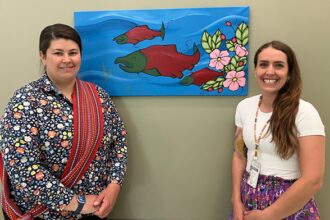In the quiet communities of Grey Bruce, a silent safeguard operates daily to protect residents from threats they may never see. The Grey Bruce Public Health unit has intensified its efforts to ensure the safety of food and water across the region, implementing a comprehensive monitoring system that serves as a crucial defense against potential health hazards.
“Water and food safety isn’t something people think about until there’s a problem,” explains Dr. Ian Arra, Medical Officer of Health for Grey Bruce Public Health. “Our goal is to ensure residents never have to worry about what’s on their plate or flowing from their tap.”
The health unit’s latest quarterly report reveals impressive statistics: over 500 restaurant inspections completed, 300 water samples analyzed, and 15 potential contamination incidents successfully intercepted before affecting public health. These numbers represent more than mere bureaucratic achievements—they reflect a dedicated commitment to community wellbeing.
Local restaurant owner Maria Sanchez has witnessed the health unit’s work firsthand. “Their inspectors are thorough but fair,” she notes. “They’ve helped us improve our practices and ensure we’re serving food that meets the highest safety standards. It’s reassuring to know they’re looking out for everyone.”
The unit’s water safety program has expanded significantly following last year’s provincial funding increase. New testing protocols can now detect microscopic contaminants that previously might have gone unnoticed, including emerging concerns like microplastics and pharmaceutical residues in water supplies.
For rural residents relying on well water, the health unit offers free testing kits and consultations. “We’ve seen a 30% increase in voluntary testing,” states water safety coordinator James Wilson. “That proactive approach helps us identify potential issues before they become health emergencies.”
The comprehensive food safety program includes not only restaurant inspections but also educational initiatives for food handlers and public awareness campaigns. Special attention has been directed toward seasonal events and festivals, where temporary food setups require additional vigilance.
Grey Bruce’s approach has garnered attention from neighboring health units. Its innovative mobile testing laboratory allows technicians to analyze samples on-site at remote locations, significantly reducing response times during potential contamination events. The mobile unit was deployed during last month’s flooding in the northern part of the region, enabling rapid water testing that prevented possible waterborne illness outbreaks.
Climate change presents emerging challenges, with warming temperatures potentially increasing bacterial growth rates and altering contamination risks. “We’re adapting our protocols to address these evolving threats,” Dr. Arra explains. “What worked a decade ago may not be sufficient tomorrow.”
The health unit’s work extends beyond reactive testing. Their prevention programs include extensive mapping of water systems and potential contamination sources, creating a comprehensive risk assessment tool that helps prioritize monitoring efforts.
As Grey Bruce continues growing and developing, the question remains: how will our communities balance progress with the fundamental need for safe food and water? The answer may lie in the continued vigilance of our public health professionals and the community’s willingness to support their essential work.

























